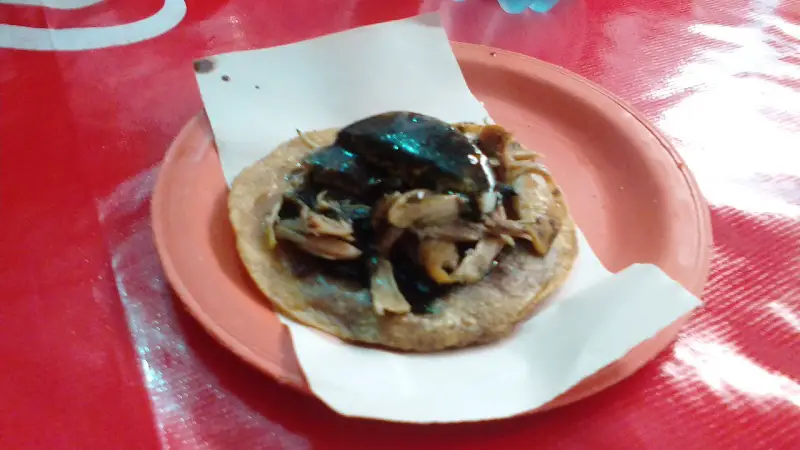THE BLACK FILLING AND ITS MACABRE HISTORY
Relleno negro (black stuffing) is a dish from Yucatán, México, based on turkey, pork, and mixed chili peppers (Chilmole). It is traditionally prepared in the month of November in a festival called Hanal Pixán.
The original recipe contains turkey, ground pork to make the but (meatball), tomato, Chilmole, achiote, black pepper, cloves, cumin, oregano, epazote, garlic, and boiled eggs. The black color of the stew comes from the mixture and toast of the chilies that are used in the chilmole, among which we can find: ancho chili, black peppers, cloves, cumin, natural achiote, burnt tortillas, sour orange juice, garlic, oregano and salt.
As we said before, Relleno Negro is made from a paste, called Recado, which is made of chilies and some other spices, all of this is toasted and a black dough is made using a mill.
Afterward, it is dissolved with broth or consommé (which results from cooking turkey, chicken, beef, and pork), it is lighter than a mole, and it is not as thick.
It is accompanied by a meatball, in Yucatan they call it But (it pronounced “boot”), which is ground meat prepared with tomato, onion, epazote, egg (to make it firm), and pieces of boiled egg.
The meatball is cooked in the consommé so that it does not fall apart. To finish, a piece of each meat is served along with half of a meatloaf.

Based on the document Food, and Modernity in Mexico (2011) “On the main dates during the “Days of the Dead”, especially November 1 and 2, the Maya people prepare sophisticated plates such as Relleno Negro, Mechado or Escabeche; using turkey, and most of the time, these are cooked in píib (which means underground)…”
According to information from researcher Rafael Gómez Chi, in his Facebook channel “Delirious Chronicles” chapter “The macabre origin of black filling”, at funerals in many Yucatecan towns until about three or four decades ago, people used to wash the body of the deceased with water. and roughly after covering the nose, ears, and eyes (the latter in case you find out about his death, don’t make it sadder), the body was bathed.
Then, the water used to wash the body was collected and mixed with the chocolate and Black Filling that was served to the mourners so that they would take away the sorrows and sadness and the deceased could pass on to a better life. This custom was known as Bó-Kebán.
Source: Línea de Fuego Quintana Roo






